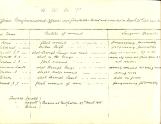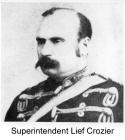14
With no response from Ottawa to petitions outlining the grievances, Riel declared the "Provisional Government of the Saskatchewan" on March 19, 1885. Riel's declaration of provisional government was followed by an ultimatum, delivered by Hillyard Mitchell (a local merchant) to Superintendent Leif Crozier at Fort Carlton, to surrender or face attack from Dumont's 400 recruits.15
Spot where Riel handed Hillyard Mitchell an ultimatum to deliver to Crozier at Fort Carlton.1885
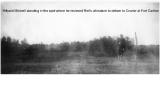
16
Fort Carlton in 1885.1885
Fort Carlton is located on the east bank of the North Saskatchewan River, west of Duck Lake
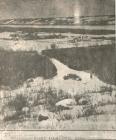
18
Crozier did not accept Riel's ultimatum. On March 25th, 1885 Dumont and some of his men went to Duck Lake to secure provisions from the stores. Mitchell knew of this ahead of time and had hidden all guns and ammunitions from his store. He then left for the protection of the Fort.19
Douglas Stobart, Mitchell's brother and Hillyard Mitchell standing infront of the Stobart store.1885
This store was one of the original buildings located in the original town site of Duck Lake which was along the lake, west of the present town of Duck Lake
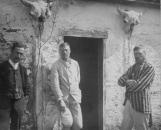
20
Here is the battlefield in Duck Lake. Note the cart paths.1885
The battle scene took place north of Duck Lake
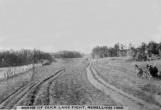
21
Crozier and interpreter, Joe McKay, met with Dumont's brother, Isidore, and a Cree named Assiyiwin. A scuffle ensued and shots were fired leaving Assiyiwin and Isidore dead. The battle then commenced with the Métis taking cover in the trees and a nearby log house and Crozier's group behind their sleighs. As more Métis reinforcements showed up, and Crozier's seven pounder gun not functioning, the Métis were able to gain the upper hand in the battle. Realizing their losses Crozier and his group retreated. When a group of Métis wanted to pursue them Riel rode by, armed only with a crucifix, and said, "For the love of God, no more killing… There has already been too much bloodshed."22
This house was used by the Metis during the Battle of Duck Lake.1885
The battle scene took place north of Duck Lake
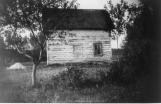
23
When Crozier returned to Fort Carlton, Commissioner Irvine was there with his reinforcements. Upon learning about the Battle of Duck Lake and Fort Carlton's vulnerable position, Irvine ordered the detachment to relocate to Prince Albert. Gabriel Dumont felt this would be an opportune time to ambush the NWMP, however, Riel vetoed this plan. During the NWMP's move the Fort burnt to the ground.24
Commissioner Irvine brought reinforcements to help Superintendent Crozier in the Battle of Duck Lake1890
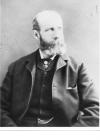
25
Surgeon's report for volunteers wounded or killed in the Battle of Duck Lake.1885
Prince Albert, this is assumption
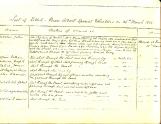
26
In total there were 4 Métis killed Isidore Dumont, Rustache Laframboise, Jeŕn Baptiste and Joseph Montour. The Métis wounded included Gabriel Dumont, Jean Baptiste Parenteau, Sheesheep Gardapui and a Fidler. Assiyiwin was the only known First Nation injured or killed.The NWMP had three killed, Cst. G.P. Arnold, Cst. G.K. Garrett and Cst. T.J. Gibson. They had 6 wounded, Inspector Joseph Howe, Cpl. T.H. Gilchrist, Cst. S. Gordon, Cst. J.J. Wood, Cst. W.A. Manners-Smith and Cst. A. Miller.
The Prince Albert volunteers suffered 9 killed, Lieutenant John Morton, Cpl. William Napier, Cst. Joseph Anderson, Cst. James Bakie, Cst. Alexander Fisher, Cst. Robert Middleton, Cst. S.C. Elliott, Cst. Daniel Mckenzie and Cst. Daniel McPhail. The volunteer wounded list included, Cpt. H.S. Moore, Sgt. Alexander McNab, Cst. Arthur W.R. Markley, Cst. Charles A. Newett and Cst. Alexander A. Stewart.
27
Surgeon's records of wounded and dead from the Battle of Duck Lake.1885
Prince Albert, this is assumption
